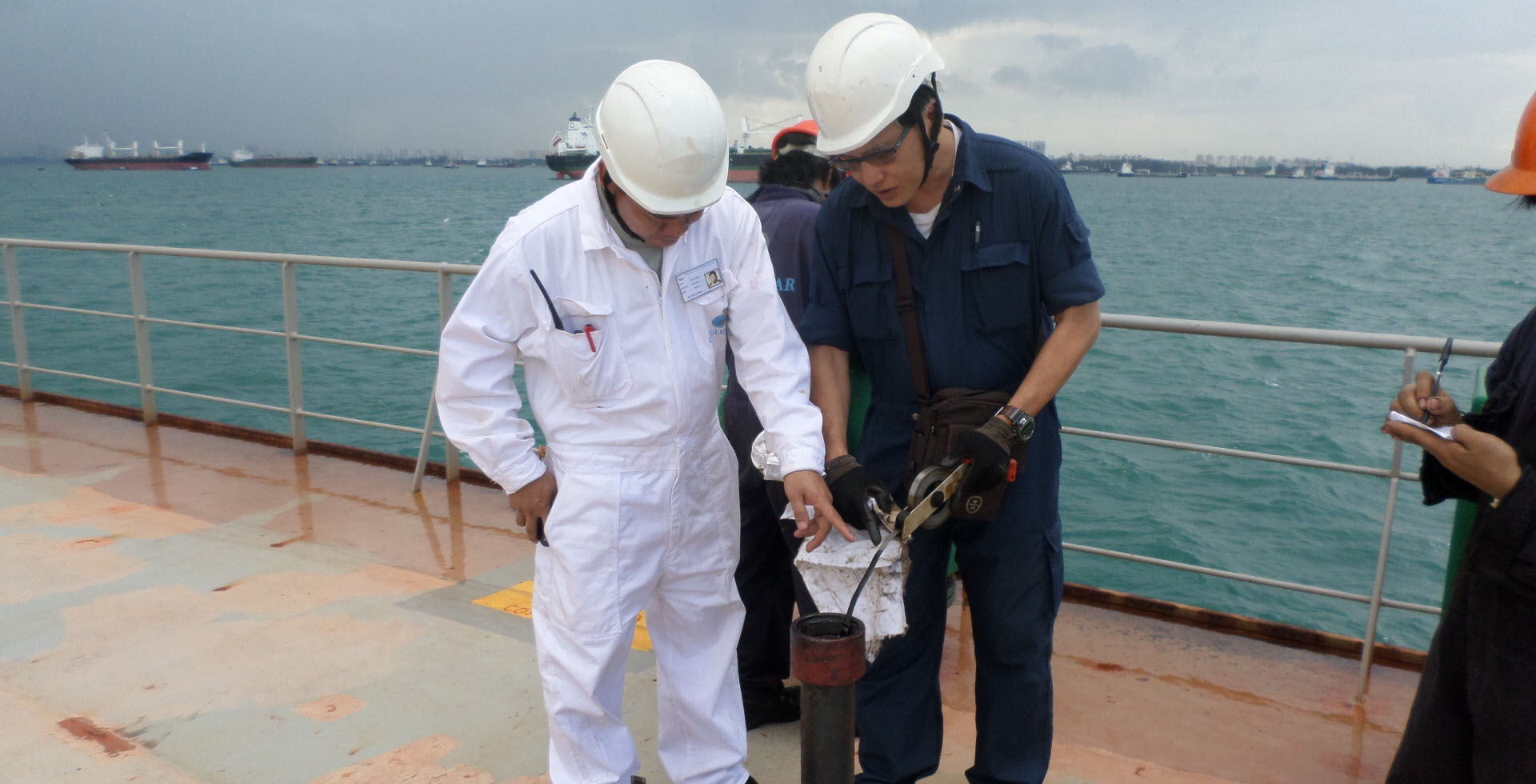
Independent Bunker Fuel Quantity Surveys
Bunker fuel often accounts for the largest share of a vessel’s operating costs, making precise quantity verification a critical component of marine fuel management. Independent bunker quantity surveys provide assurance that the contracted volume has been delivered, reducing exposure to short-delivery risks and supporting commercial claims when discrepancies arise.
Given that bunkering operations typically occur far from the buyer’s operational base, deploying a qualified bunker surveyor on-site is essential. Surveyors oversee the entire fuel transfer process, including pre- and post-transfer measurements, documentation review, and collection of representative samples for laboratory testing.
This comprehensive oversight not only safeguards fuel investments but also ensures transparency and compliance with industry best practices—an essential advantage in today’s cost-sensitive and regulation-driven shipping environment.
On-Hire / Off-Hire Bunker Survey Services
On-hire and off-hire bunker surveys are critical components of vessel chartering operations, ensuring accurate fuel accounting during the transfer of responsibility between owners and charterers.
These surveys are conducted at the commencement (on-hire) and conclusion (off-hire) of a charter period to determine the exact quantities of marine fuels—such as HSFO, VLSFO, MGO, and LSMGO—on board. Our surveyors perform tank inspections using calibrated sounding tapes, electronic gauging devices, and thermometric tools to accurately calculate the volume and mass of fuel, applying corrections for temperature and density in accordance with ISO 4267, ISO 91, and API MPMS standards.
All measurements are reconciled with bunker delivery notes (BDNs) and recorded in a comprehensive survey report. The results are used to determine financial adjustments for bunkers remaining on board (ROB), ensuring fairness and transparency between contractual parties.
Surveys are conducted in line with industry best practices and are compliant with MARPOL Annex VI, ISO 8217, and applicable charter party clauses. Our independent and impartial approach provides stakeholders with the documentation required for accurate fuel valuation, dispute resolution, and audit readiness
Bunker Survey During Bunkering Operations
A bunker survey conducted during bunkering operations is essential to verify the accurate quantity of marine fuel delivered to a vessel, reduce the risk of quantity disputes, and ensure compliance with contractual and regulatory requirements.
The survey is performed by an independent, qualified surveyor who represents the interests of the fuel purchaser, charterer, or owner. It encompasses a series of critical steps carried out before, during, and after the fuel transfer operation:
- Pre-Transfer Phase:
- During Transfer:
- Post-Transfer Phase:
Inspection and calibration of all measuring equipment, including calibrated sounding tapes, thermometers, and density meters. Verification of barge tank calibration tables and reference documentation. Initial gauging and sounding of all relevant barge and receiving vessel tanks. Measurement of temperature, density (if available), and ullage/sounding levels to calculate initial quantities in accordance with ISO 4267, ISO 91, and API MPMS standards.
Continuous oversight of the bunkering process to ensure adherence to agreed transfer rates and safety protocols. Sampling of marine fuel (e.g., VLSFO, MGO, HSFO) at the manifold using MARPOL-compliant drip sampling methods, ensuring representative samples are collected in accordance with IMO MEPC.182(59). Sealing of all sample bottles and documentation of sample custody in a bunker sampling log.
Final gauging of barge and vessel tanks to determine total quantities transferred. Verification and cross-checking of bunker delivery notes (BDNs). Detailed reporting of any discrepancies, shortages, or irregularities observed during the operation. The final Bunker Quantity Survey Report includes a complete breakdown of quantities before and after transfer, sample seal numbers, observed discrepancies, and compliance notes, providing a defensible record for both commercial and regulatory purposes.
